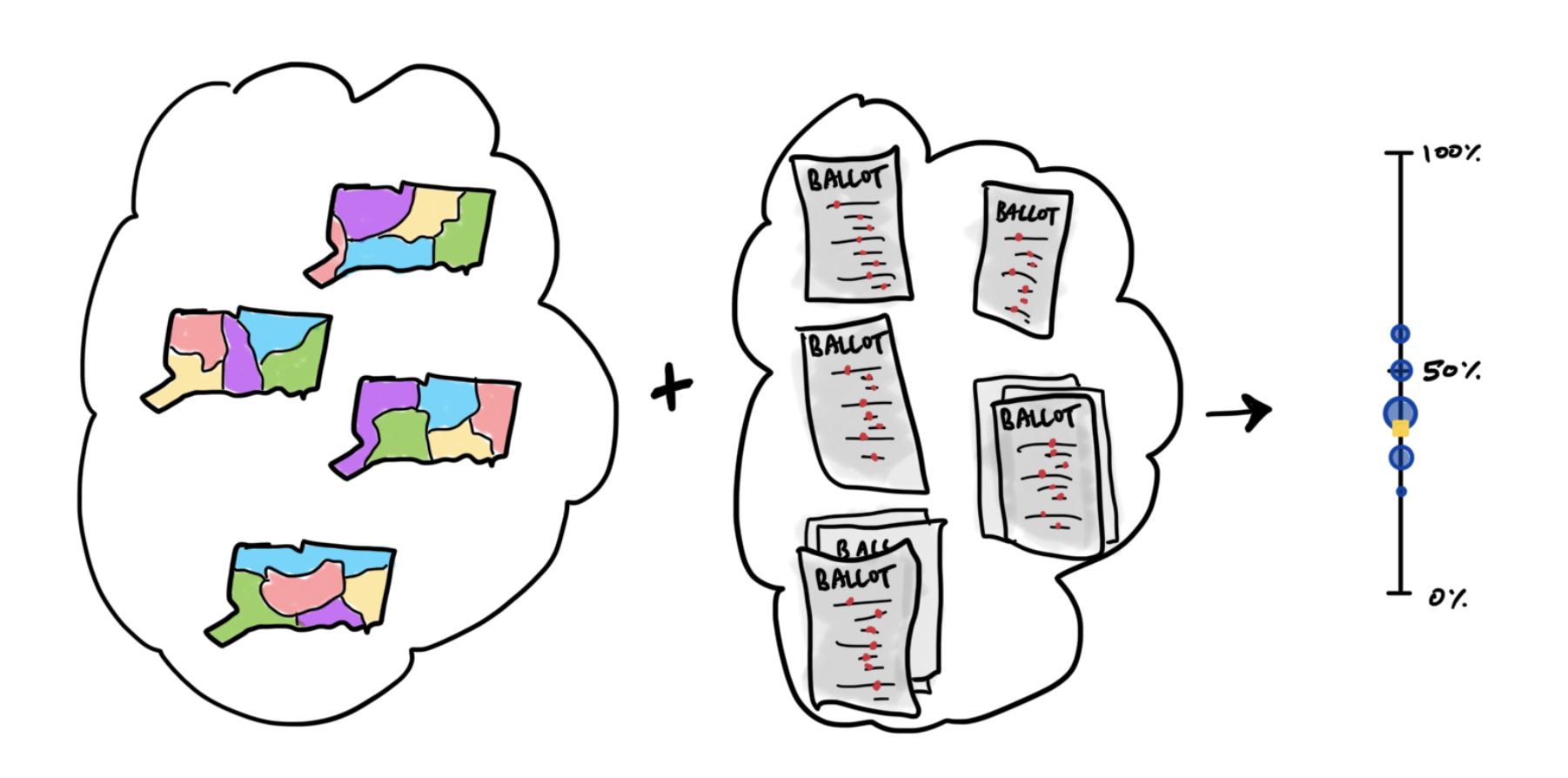Modeling the Fair Representation Act

We’re delighted to share a study entitled Modeling the Fair Representation Act, undertaken in partnership with FairVote, which has some surprising findings!
The Fair Representation Act is model legislation that calls for members of the House of Representatives to be elected from multi-member districts, favoring districts that elect three or five members. This means that a state like Florida, with 28 seats in the House, would need to be divided up into five 5-member districts and one 3-member district. Ranked-choice voting would then be used in each of these districts to send representatives to Washington.
In our study, we focus on the question of proportional representation for voters of color, and we find extremely encouraging evidence from our statistical modeling that suggests the ability to elect will be at least in keeping with population shares, across a range of different behavioral assumptions.
But even more interesting to us was a second finding: these multi-member districts are much harder to gerrymander! We found that even a computationally sophisticated attempt to optimize the performance of the districts based on demographics would fail under reasonable assumptions on how voters rank their preferences. You might have expected that richer voter preferences, in the form of rankings, would make it harder to engineer the outcomes, but we were surprised to see that the advantage to the line-drawer actually all but disappears.
You can check out the report here and the supplemental data here.